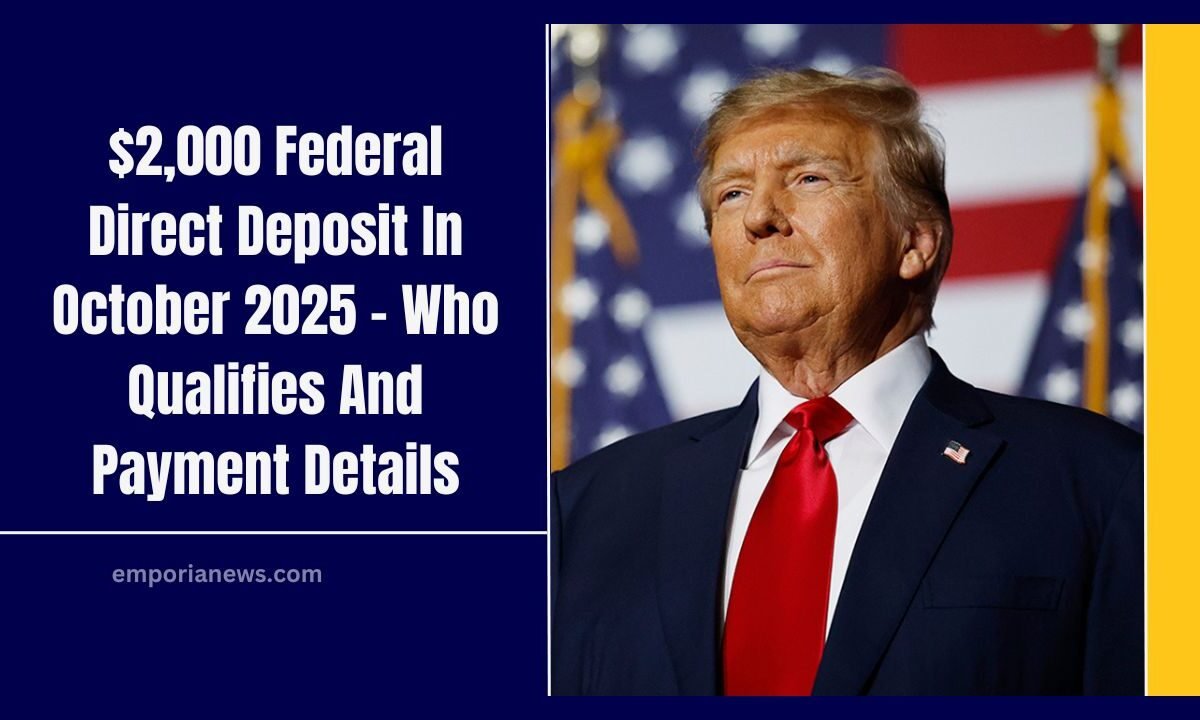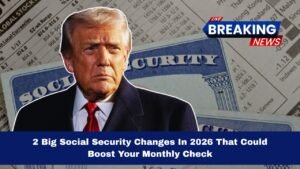The U.S. federal government has announced a $2,000 direct deposit for eligible Americans in October 2025, offering crucial relief to families and individuals dealing with rising living costs, inflation, housing expenses, and healthcare needs.
This one-time direct deposit is part of ongoing federal programs aimed at providing financial stability and easing the burden on low- and middle-income households, seniors, and families with dependents.
Quick Overview of the $2,000 Federal Direct Deposit
| Detail | Information |
|---|---|
| Payment Amount | $2,000 |
| Eligibility | U.S. citizens or residents meeting income criteria |
| Payment Method | Direct deposit (paper checks if no bank info) |
| Payment Date | October 2025 (exact dates vary by bank) |
| Application | Automatic for eligible individuals with IRS records |
| Tax Status | Taxable by IRS |
Who Will Get the $2,000 Direct Deposit?
Eligibility for the $2,000 payment depends on several key factors:
- Income Requirements
- Individuals earning up to $75,000 annually qualify for the full payment.
- Heads of household can earn up to $112,500.
- Married couples filing jointly qualify with incomes up to $150,000.
- Reduced payments may apply for those above these thresholds.
- Citizenship or Residency
- Must be a U.S. citizen or resident alien with a valid Social Security Number.
- Filing Status
- Eligibility is based on 2024 tax filings submitted to the IRS.
- Bank Information
- Direct deposit requires valid banking details on file.
- If no account is listed, a paper check will be mailed.
This payment primarily supports low- and middle-income families, seniors, and households with children.
October 2025 Payment Schedule
The federal government has confirmed that payments will begin in October 2025, though the exact date may vary depending on your bank.
- Direct Deposits: Most recipients should receive funds mid-October 2025.
- Paper Checks: For those without banking details, checks will be sent late October into early November 2025.
How to Check Your $2,000 Payment Status
Eligible recipients can track their deposit through the IRS system:
- Visit the IRS “Get My Payment” tool.
- Enter your Social Security Number, date of birth, and address.
- Review your expected deposit date and payment method.
How to Receive Your $2,000 Payment
To ensure you receive the payment smoothly:
- Confirm Bank Details: Make sure your IRS records include the correct account number and routing details.
- File Taxes on Time: Only those who submitted their 2024 federal tax return will be considered.
- Update Household Info: Report dependents or marital status changes that may affect eligibility.
- Track Status: Regularly check the IRS portal for updates.
Common Mistakes That Delay Payments
Many eligible individuals risk losing out due to avoidable errors. Common mistakes include:
- Missing the IRS filing deadline.
- Providing outdated or incorrect banking details.
- Failing to report dependents or household changes.
- Ignoring IRS notices regarding eligibility.
Benefits of the $2,000 Direct Deposit
The direct deposit offers more than just short-term relief:
- Financial Support: Helps families meet rising expenses like rent, groceries, and utilities.
- Stability for Seniors: Many retirees on fixed incomes rely on such federal support.
- Quick Access: Direct deposits arrive faster than mailed checks.
- Flexibility: The payment can be used for essentials, debt payments, or savings.
Tax Information
The $2,000 federal direct deposit is taxable income under IRS rules. Recipients must report it on their 2025 federal tax returns. To avoid surprises, taxpayers may adjust their withholding or set aside funds for tax season.
The $2,000 federal direct deposit in October 2025 is a much-needed relief effort for millions of Americans. By targeting low- and middle-income households, seniors, and families, it aims to ease the pressure of rising living costs.
Eligible recipients should verify their bank details, check their status through the IRS portal, and prepare for the deposit. While this payment won’t solve all financial challenges, it offers essential support at a critical time.




